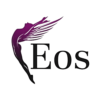Table of Contents
ToggleIn today’s competitive global market, offering a robust employee benefits package is essential for attracting and retaining top talent. This is especially true in China, where the job market is dynamic, and employees have high expectations. According to SHRM’s study, 60% of employees rated benefits as a very important contributor to job satisfaction, yet only 68% expressed satisfaction with their current benefits. For employers and business owners, understanding and providing competitive benefits can be the key to success.
Understanding Employee Benefits in China
China’s employment landscape is governed by a complex array of laws and regulations. Employers must comply with both national and provincial mandates regarding employee benefits. These benefits typically include social insurance, housing fund contributions, health and safety regulations, and additional perks that can help differentiate an employer in the marketplace.
Mandatory Benefits
1. Social Insurance ‘社会保险’
China’s social insurance system includes several key components: basic pension insurance, basic medical insurance, unemployment insurance, work injury insurance, and maternity insurance. These programs are designed to provide financial security and support to workers in various employment situations.
- **Pension Insurance ‘**养老保险‘China operates a dual pension system comprising the Urban Employees’ Pension Insurance (UEPI) and the Urban and Rural Residents’ Pension Insurance (URRPI). The UEPI is mandatory for all formal employees and is jointly funded by employers and employees. In contrast, the URRPI is primarily for those not covered by the UEPI, including flexible and informal workers, and is funded by individual contributions and government subsidies.
- **Medical Insurance ’**医疗保险‘Medical insurance in China is similarly bifurcated into schemes for employees and residents. The Urban Employees’ Basic Medical Insurance (UEBMI) covers formal employees and is funded by both employers and employees, while the Urban and Rural Residents’ Basic Medical Insurance (URRBMI) covers those not in formal employment, with funding from individual contributions and government support.
- **Work Injury and Maternity Insurance ’**工伤保险和生育保险‘Work injury and maternity insurance are crucial for protecting workers from occupational hazards and ensuring financial support during maternity leave. These insurances are primarily funded by employers and provide benefits such as medical treatment, compensation for work-related injuries, and maternity leave pay.
Challenges in Social Insurance Coverage
Despite comprehensive policies, significant gaps remain in the social insurance coverage for flexible and platform workers. According to recent studies by MOHRSS, many flexible workers do not participate in pension insurance due to unstable incomes and a lack of awareness about the benefits. Additionally, platform workers, such as those employed by ride-sharing or delivery companies, often face difficulties in accessing social insurance due to their atypical employment arrangements.
Regional Variations in Social Insurance
China’s extensive geographical coverage leads to significant regional variations in the costs and requirements of Social Insurance. Below is a table summarising these differences in Shanghai, Beijing, and Guangzhou.:
| City | Shanghai | Beijing | Guangzhou | |||
|---|---|---|---|---|---|---|
| Social insurance items | Employee portion | Employer portion | Employee portion | Employer portion | Employee portion | Employer portion |
| Pension | 8% | 16% | 8% | 16% | 8% | 15% |
| Medical (including maternity) | 2% | 9% | 2% | 9.8% | 2% | 5.35% |
| Unemployment | 0.5% | 0.5% | 0.5% | 0.5% | 0.2% | 0.8% |
| Work-related injury | 0% | 0.16% to 1.52% | 0% | 0.2% to 1.9% | 0% | 0.2% to 1.4% |
| Total | 10.5% | 25.66% to 27.02% | 10.5% | 26.5% to 28.2% | 10.2% | 21.35% to 22.55% |
| Ceiling for monthly salary base | CNY 36,549 | CNY 33,891 | • CNY 26,421 for pension. | |||
| • CNY 29,979 for medical. | ||||||
| • CNY 38,082 for unemployment. |
Source: PWC and MBA
Disclaimer: The rates and limits are accurate as of 30th June 2024 and may change based on local regulations.
2. Housing Fund ‘**住房公积金’
China’s housing fund system, known as the “Housing Provident Fund” (HPF) is a compulsory savings scheme designed to support Chinese workers in purchasing, building, or renovating homes. In the changing economic landscape, it’s crucial for companies to understand and make use of the housing fund to keep their edge in attracting and keeping talent. Contributions to the fund come from both the employer and the employee, accumulating interest over time. Withdrawals can be made under certain conditions, offering a financial resource for housing needs.
The following outlines the key aspects of the housing fund in China, the challenges in its coverage, and strategies for companies to stay competitive.
Key Aspects of the Housing Fund
- Employee and Employer Contributions: Both parties contribute a percentage of the employee’s monthly salary to the HPF. The exact contribution rate varies by region and can range from 5% to 12%.
- Usage of Funds: The accumulated funds can be used for several housing-related expenses, including:
- Purchasing a home
- Building a house
- Renovating an existing property
- Repaying a mortgage
- Renting a home
- Withdrawal Conditions: Employees can withdraw their HPF savings under specific circumstances, such as purchasing a home, reaching retirement age, or facing a serious illness. Additionally, employees who leave China permanently can withdraw their HPF balance.
Challenges in Housing Fund Coverage
The HPF allows for savings under specific circumstances, such as when purchasing a home, reaching retirement age, or facing a serious illness. Moreover, employees who permanently leave China can withdraw their HPF balance. However, despite its numerous advantages, the Housing HPF system faces various challenges that can directly impact its overall effectiveness and accessibility.
- Regional Disparities
Significant regional disparities exist in HPF implementation. Contribution rates, housing prices, and withdrawal conditions vary across different cities and provinces, resulting in unequal benefits for employees. In some regions, high housing prices surpass the benefits provided by the HPF, making it less effective in supporting home ownership.
- Awareness and Participation
Many employees, particularly in smaller cities and rural areas, lack full awareness of the HPF and its benefits. This lack of awareness can lead to low participation rates, particularly among low-income workers and those in the informal sector.
- Administrative Complexities
The administrative processes involved in the HPF, including application procedures and documentation requirements, can be cumbersome and challenging for employees.
3. Health and Safety ‘工伤保险’:
China’s health and safety regulations are designed to protect workers from occupational hazards and ensure their well-being. These regulations are governed by the Law of the People’s Republic of China on Work Safety and the Occupational Disease Prevention Law. Employers are required to implement safety measures and provide health benefits to their employees.
In the following discussion, we will explore the key aspects of health and safety regulations in China, the challenges involved in implementing these regulations, and strategies for employers to maintain a safe and healthy work environment.
Important Health and Safety Coverages
- Occupational Health Services: Employers must provide regular health check-ups, particularly for employees working in hazardous environments. These check-ups help in early detection and prevention of occupational diseases.
- Safety Training: Regular training sessions on workplace safety protocols and emergency response procedures are mandatory. This ensures that employees are well-informed about potential hazards and the necessary precautions.
- Protective Equipment: Employers are required to supply appropriate personal protective equipment (PPE) such as helmets, gloves, and masks to employees, especially those in high-risk jobs.
- Workplace Safety Measures: This includes maintaining a safe working environment through measures such as proper ventilation, ergonomic workstations, and regular equipment maintenance.
- Emergency Response: Establishing and regularly updating emergency response plans for incidents like fires, chemical spills, and natural disasters.
Challenges in Health and Safety Coverage
Despite comprehensive regulations, there are significant challenges in ensuring effective health and safety coverage across all workplaces in China.
- Regional Disparities
Similar to other aspects of labour regulations, there are regional disparities in the enforcement and implementation of health and safety measures. Urban areas typically have better resources and stricter enforcement compared to rural areas, leading to unequal protection for workers.
- Awareness and Compliance
Many small and medium-sized enterprises (SMEs) may lack awareness or resources to fully comply with health and safety regulations. This is especially true in sectors like construction and manufacturing, where the risk of occupational hazards is high.
- Administrative Burdens
The administrative processes involved in ensuring compliance with health and safety regulations can be cumbersome for employers. Keeping up with the required documentation, regular training, and equipment maintenance can be challenging, particularly for smaller businesses.
- Occupational Diseases
China faces significant challenges with occupational diseases, particularly in industries such as mining, manufacturing, and construction. Early detection and prevention are critical, but many workers may not have access to regular health check-ups, leading to late diagnoses and severe health consequences.
Optional and Competitive Benefits
Employers often offer additional benefits beyond the statutory requirements to stay competitive. These benefits can include:
1. Supplemental Health Insurance
While basic health insurance is mandatory, many companies offer additional health insurance to cover gaps in the national system. This can include dental, vision, and more comprehensive medical coverage.
2. Performance Bonuses
Offering performance-related bonuses can be an effective way to motivate and retain employees. These bonuses can be tied to individual, team, or company performance.
3. Professional Development
Investing in employees’ professional growth through training programs, certifications, and educational allowances can enhance job satisfaction and loyalty.
4. Flexible Working Arrangements
Providing remote work, flexible hours, and additional paid time off can make a company more attractive to potential hires.
Successful Strategies in Implementing Employee Benefits in China
Many Chinese companies have been recognised for their effective employee engagement strategies. In particular, 42 companies were named HR Asia’s Best Companies to Work for in Asia, demonstrating their commitment to motivating and communicating with employees.
A survey conducted by HR Asia involving 11,955 employees from 278 Chinese companies highlighted several key aspects of employee engagement and satisfaction:
- Promoting Employee Growth: 93% of the survey participants stated that their organisation has implemented policies to encourage and promote employee growth through additional skills and certifications.
- Team Collaboration: 91% of employees are willing to assist their colleagues in solving problems or improving work processes.
- Flexible Working Arrangements: 89% of respondents appreciated having flexible working arrangements, which became especially important during the global health crisis.
However, the survey also revealed some challenges, such as:
- Time Management: 75% of respondents expressed concerns about the lack of time to complete tasks, indicating that working from home has impacted productivity and efficiency.
The Importance of Providing Benefits Beyond the Basics
Offering benefits beyond the mandatory requirements is crucial for several reasons:
- Employee Satisfaction: Employees today are not solely motivated by monetary compensation. They seek job satisfaction through various aspects, including opportunities for growth, collaboration, and a supportive work environment. Providing benefits like professional development and flexible working arrangements addresses these needs, leading to higher job satisfaction and employee retention.
- Attracting Top Talent: In a competitive job market, offering additional benefits can differentiate a company from its competitors. Prospective employees often consider the overall benefits package when choosing an employer, making it essential for companies to offer attractive and comprehensive benefits.
- Boosting Morale and Productivity: When employees feel valued and supported through benefits like health insurance and performance bonuses, their morale and productivity will likely increase. This can lead to a more motivated workforce and better overall company performance.
- Fostering a Positive Work Culture: Creating a work culture that offers flexible working arrangements and fosters team collaboration can significantly enhance employee engagement and loyalty. A supportive and inclusive work environment plays a crucial role in shaping a positive workplace atmosphere.
- Managing Employee Health and Well-Being: According to a recent report on Chinese employee healthcare benefits and health management published by the Human Resource Excellence Center, only 20% of the surveyed 275 companies had developed comprehensive health management plans, as stated by Medium. Employee health programs should encompass more than just physical activities; they include diet, exercise, smoking cessation, stress management, and health education. Supporting health initiatives and embedding them into company culture is essential for fostering a healthy work environment.
Conclusion
Providing competitive employee benefits in China involves understanding and complying with mandatory benefits, such as social insurance, housing funds, and health and safety regulations. Additionally, offering optional benefits like supplemental health insurance, performance bonuses, professional development opportunities, and flexible working arrangements can significantly enhance an employer’s attractiveness. Recognising that employees value growth, collaboration, and a positive working style is key. By adopting innovative health practices and fostering a supportive work environment, businesses can create a culture of health that attracts and retains top talent, ultimately driving their success in the competitive Chinese market.
Explore how EOS Global can assist your business in navigating employee benefits in China and ensuring compliance with local regulations. Contact us today!
Image by Media_Breeze from Pixabay






